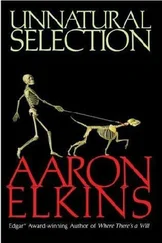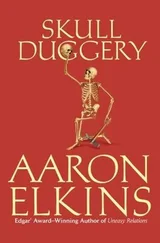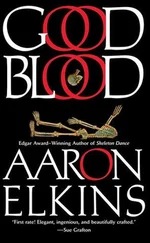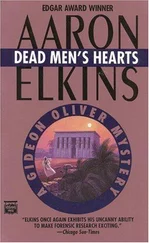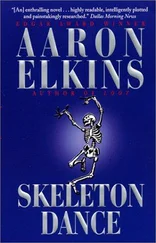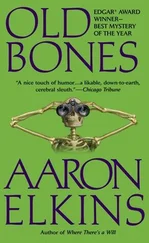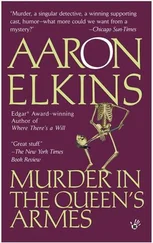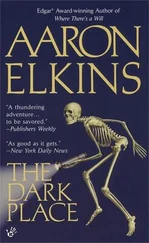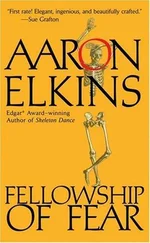Aaron Elkins - Uneasy Relations
Здесь есть возможность читать онлайн «Aaron Elkins - Uneasy Relations» весь текст электронной книги совершенно бесплатно (целиком полную версию без сокращений). В некоторых случаях можно слушать аудио, скачать через торрент в формате fb2 и присутствует краткое содержание. Жанр: Классический детектив, на английском языке. Описание произведения, (предисловие) а так же отзывы посетителей доступны на портале библиотеки ЛибКат.
- Название:Uneasy Relations
- Автор:
- Жанр:
- Год:неизвестен
- ISBN:нет данных
- Рейтинг книги:3 / 5. Голосов: 1
-
Избранное:Добавить в избранное
- Отзывы:
-
Ваша оценка:
- 60
- 1
- 2
- 3
- 4
- 5
Uneasy Relations: краткое содержание, описание и аннотация
Предлагаем к чтению аннотацию, описание, краткое содержание или предисловие (зависит от того, что написал сам автор книги «Uneasy Relations»). Если вы не нашли необходимую информацию о книге — напишите в комментариях, мы постараемся отыскать её.
Uneasy Relations — читать онлайн бесплатно полную книгу (весь текст) целиком
Ниже представлен текст книги, разбитый по страницам. Система сохранения места последней прочитанной страницы, позволяет с удобством читать онлайн бесплатно книгу «Uneasy Relations», без необходимости каждый раз заново искать на чём Вы остановились. Поставьте закладку, и сможете в любой момент перейти на страницу, на которой закончили чтение.
Интервал:
Закладка:
Then, five years ago, the matter was settled, at least in the popular mind; through Gunderson’s doing, no less. He had been excavating several Neanderthal and Homo sapiens sites in Spain and Gibraltar at the time, commuting between them as needed. The Gibraltar site, a coastal rock shelter known as the Europa Point Cave, had come to his attention when the owner of the land, bulldozing the area in a crazy scheme to turn it into a mushroom farm, had uncovered some Stone Age tools, soon determined to be Neanderthal. When Gunderson had offered to buy this promising land from him, the man had jumped at the chance to rid himself of it, and Gunderson and his crew of local workmen had started digging.
Two months’ work turned up a few more stone tools, some butchered ibex bones, and a handful of charcoal dated at 26,000 years before the present. No human remains. Mildly interesting, but not exciting enough for Gunderson; just one more meager Neanderthal encampment, little different from the many others that had been found. He offered it to Horizon, which jumped at the chance to excavate at Europa Point, and the dig thereupon proceeded in orderly, highly professional fashion for some months under their oversight, with the eminent Adrian Vanderwater of the University of California in charge of work in the field. Their efforts were generally rewarding. Two more Neanderthal burials were found, along with more tools and butchered bones, and an unusual pendant (if that’s what it was) carved from a wolf’s tooth.
Highly satisfactory results. But then a truly remarkable find was made. In a sediment-filled hanging crevice along one wall of the shelter, the ceremonial burial of a female and a young child was unearthed, somewhat scattered and with fewer than half the bones still present, but with the remains of the female’s skeletal arms tenderly cradling the remains of the child to her skeletal breast. The conclusion was inescapable: they were mother and child. Nothing like this had ever been seen before in a Stone Age burial. The poignant photographs, retouched for emphasis but essentially accurate, that were shown on TV news programs from pole to pole, soon established them as Gibraltar Woman and Gibraltar Boy: the First Family.
That would have been extraordinary enough, but when the bones were sent to the Horizon Foundation’s anthropology laboratory for detailed study by an interdisciplinary team, the results were even more amazing. The three-person team, of which Gideon was the lead scientist, issued a thorough, meticulous report indicating that the female, who was in her mid-twenties (an old woman in Paleolithic terms), was not Neanderthal at all, but human. This sent a shock wave through the world of prehistoric archaeology: it had now been irrefutably shown for the first time that humans and Neanderthals could and did live together, at least in this one case, and that the human – an outsider, an alien female – had been ceremonially buried with the love and respect due a member of the clan. (The ceremonial nature of the burial was established by red stains on the bones, indicating that the bodies had been wrapped in an ocher-stained skin, the pigment of which had been absorbed by the skeletons as the shroud decayed.)
As spectacular as that was, it was the examination of Gibraltar Boy that opened up even more stunning avenues of conjecture and dispute. The child, it seemed, could arguably be described as combining characteristics of both Neanderthals and humans. Despite the intriguing possibilities that this raised, Gideon was determined that the team’s report would not be a source of controversy – and especially of controversy based on insufficient data. Just the facts, ma’am. No theoretical stands were taken, no sweeping conclusions were drawn.
Of course, others did draw them. To the proponents of human-Neanderthal interbreeding, here was concrete evidence that mating had occurred. A few – a very few – other skeletons had been found that seemed to exhibit similar blends of human and Neanderthal traits, but the noninterbreeding proponents had argued them away as mere variations of either Neanderthals or humans, well within the range of variation to be found in any species.
But never had a find like this been made in such affecting circumstances. That the two skeletons were mother and son, few who had seen the photographs doubted. And what could the boy’s human-Neanderthal mixture of traits (if such it was) mean other than that he was a hybrid, that he had mixed parentage? His mother was indisputably human. His father had to have been Neanderthal. A human woman had mated with a Neanderthal male many thousands of years ago, and they had produced a child, quickly dubbed Gibraltar Boy in both the popular and scientific press. In actuality, it was a misnomer; one that had always bothered Gideon. The child was only about four years old, too young to determine the sex from the available bones, and he had clearly indicated as much in the report. Nevertheless, some reporter’s appellation of “Gibraltar Boy” had caught the popular imagination, and it had stuck. Gibraltar Boy he was, and Gibraltar Boy he would always be, and the objections of a few stuffy pedants like Gideon Oliver weren’t going to change matters.
In any case, as far as the human-Neanderthal-admixture-theory people were concerned, the argument was settled. When you were talking about things that had happened more than twenty millennia ago, how could you ask for more solid proof than this? In the popular mind as well, the theory was now a fact, but scientists were still divided. The no-mixing contingent suffered quite a few defectors, but many refused to throw in the towel. The embattled true believers fought on, claiming that the measurements were inconclusive and fragmentary (which they were); the so-called human traits were ambiguous, mere within-species variations. Not all Neanderthals looked alike, not all chimpanzees looked alike, and not all human beings looked alike. The boy was, like his mother, a Neanderthal, pure and simple. A little less chunky than most, maybe, but Neanderthal all the same.
So what was a human woman doing buried in a Neanderthal rock shelter with a Neanderthal child in her arms? Who knew? Maybe she was the original nanny. Captured as a slave, perhaps. Or maybe she was an outcast from her own group who had been accepted into the Neanderthal fold. But then why was she buried with the child? Who could say? But to build from this scanty, questionable evidence, the conclusion that they were human mother and human-Neanderthal offspring? No, they would need a lot more evidence before they accepted that.
In the larger world, however, there was no longer any debate, especially after Who We Are: The Legacy of the First Family, The Learning Channel’s highest-rated series ever, was shown, hosted by Gunderson himself at his urbane, avuncular best. In the popular mind, intergroup mixing between humans and Neanderthals was now a fact. (You couldn’t say “interspecies mixing” anymore, as Gunderson lucidly, if a bit simplistically, explained, because the biological definition of species turned on the idea that only members of the same species could interbreed.) The fight was over.
The reverberations were felt not only in the world of prehistoric anthropology, but throughout the social sciences. For one thing, the theory that the Neanderthals had become extinct because their rivals, the more advanced Homo sapiens, had wiped them off the face of the earth by either ruthless, outright aggression or by outcompeting them for scarce resources took a major hit. Proponents of this theory, while unconvinced by the find, were forced to retreat to their ivory towers, muttering and licking their wounds. More broadly, the study of the relationships between more and less advanced societies was given new life. And champions of multiculturalism had a new and appealing poster child. (If Neanderthals and early humans could get along well enough to produce a child, and if the human mother of that child was lovingly taken in by the child’s extended Neanderthal family, then surely we humans of merely different skin colors – genetically so much closer to each other – could hope to get along too… could we not?)
Читать дальшеИнтервал:
Закладка:
Похожие книги на «Uneasy Relations»
Представляем Вашему вниманию похожие книги на «Uneasy Relations» списком для выбора. Мы отобрали схожую по названию и смыслу литературу в надежде предоставить читателям больше вариантов отыскать новые, интересные, ещё непрочитанные произведения.
Обсуждение, отзывы о книге «Uneasy Relations» и просто собственные мнения читателей. Оставьте ваши комментарии, напишите, что Вы думаете о произведении, его смысле или главных героях. Укажите что конкретно понравилось, а что нет, и почему Вы так считаете.


